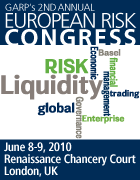Debate about the root cause of the financial crisis has raged for over a year. With blame to go around everywhere, there is no clear winner and many losers. Ill conceived government policies to stimulate single family home ownership, overly accommodative monetary policy, and explosive growth of a loosely regulated and poorly managed shadow banking system designed to disburse risk ….all helped fuel the crisis. Now that bank taxpayer bailout funds are being repaid and fears of a nationalized banking industry allayed (at least until the next “too big to fail” runs into trouble), what is an appropriate level of government involvement in the banking system?
Recent history suggests the key to creating a successful and healthy banking model lies in finding the optimal balance between free-market economics and government regulation. As this is more or less a zero-sum game, let us focus on the regulatory side of the equation. Two recent legislative initiatives could greatly re-shape the banking and financial services industry.
The Restoring American Financial Stability Act of 2009 proposed by Senator Christopher Dodd offers a number of alternatives to Barney Frank’s financial reform legislative agenda including:
So what is an appropriate level of government involvement in the banking industry? Surprisingly it may not need to be much more, or extremely complex. Simply separating those businesses with an implicit government backstop (and I am certainly not talking about any “too big to fail”) from capital raising and trading activities might be just enough.
A little better balance between the profit motive and public accountability might help as well. Greed is good. Opacity is unacceptable. Suicide is always to be prevented.
What do you think……..?
Read more >>
Recent history suggests the key to creating a successful and healthy banking model lies in finding the optimal balance between free-market economics and government regulation. As this is more or less a zero-sum game, let us focus on the regulatory side of the equation. Two recent legislative initiatives could greatly re-shape the banking and financial services industry.
The Restoring American Financial Stability Act of 2009 proposed by Senator Christopher Dodd offers a number of alternatives to Barney Frank’s financial reform legislative agenda including:
- Consolidation of bank regulatory activities under one empowered organization,
- Significant reduction in FDIC and the Federal Reserve’s role in banking oversight,
- Government intervention to soften the market impact of “too big to fail” firms gone bad and
- Prohibit commercial and investment banks from affiliating in any manner
- Require legal separation of officers, directors and employees
- Prevent commercial banks from engaging in insurance activities
- Create a one year transition period for compliance
So what is an appropriate level of government involvement in the banking industry? Surprisingly it may not need to be much more, or extremely complex. Simply separating those businesses with an implicit government backstop (and I am certainly not talking about any “too big to fail”) from capital raising and trading activities might be just enough.
A little better balance between the profit motive and public accountability might help as well. Greed is good. Opacity is unacceptable. Suicide is always to be prevented.
What do you think……..?





